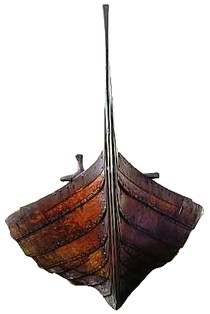DK History: Vikings
Late in the 8th century, Viking raiders from Norway, Denmark, and Sweden began to sweep across Europe. In their versatile LONGSHIPS, the Vikings sailed vast distances. Their golden age of trade, exploration, and colonization lasted until AD 1100.
The Vikings raided and settled along the coasts of Britain, Ireland, and continental Europe. They crossed the Atlantic to reach Iceland, Greenland, and Newfoundland. Viking merchants traveled through Russia to Constantinople, exchanging the amber, furs, and whale oil of the north for wine, silks, spices, and silver coins from the Middle East.
The Vikings were not Christian, and they saw isolated monasteries and churches as easy targets for hit-and-run raids. But the first people to write about the Vikings were monks who had suffered in these raids. As a result, Viking atrocities were better recorded than Viking achievements.
The Vikings worshiped their gods in the open air, choosing natural landmarks such as big rocks, unusual trees, and waterfalls. Their most important gods were Odin, the god of knowledge, Thor, the god of metalwork and thunder, and Frey, the goddess of fertility. After around 1000, Viking peoples became Christian.
Viking ships were the best in Europe. Besides the longships used for raiding and war, they had special fishing boats. For long-distance voyages, they built deeper, broader ships called knorrs.
Viking ships were made of planks of oak or pine wood, nailed to a heavy central keel (supporting timber). This made them strong but flexible. The mast was made from a tall tree trunk and supported a huge square sail. There were oars for each crewman, to row the ship when there was no wind.

